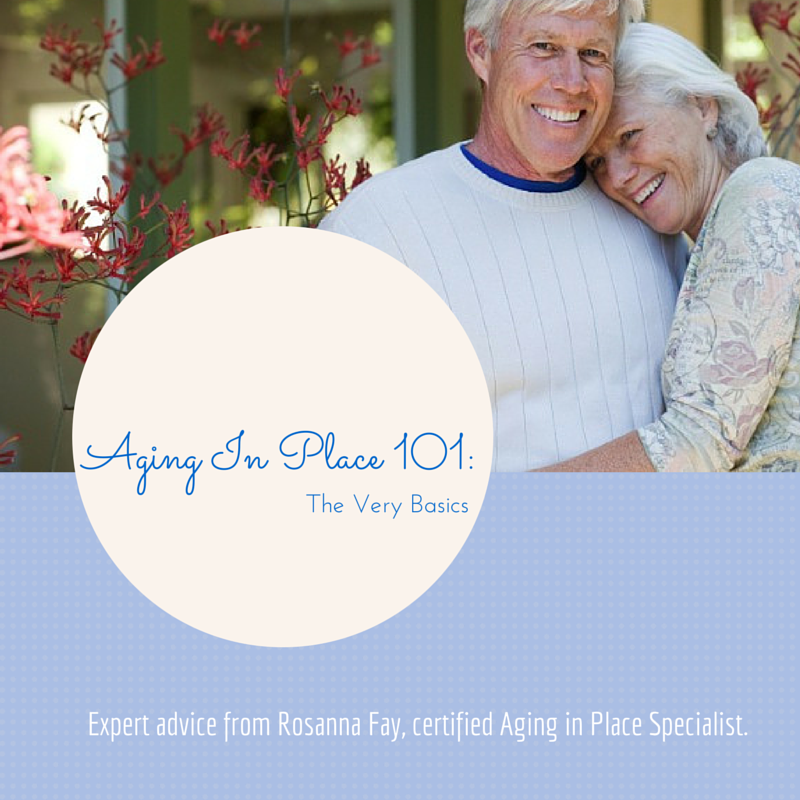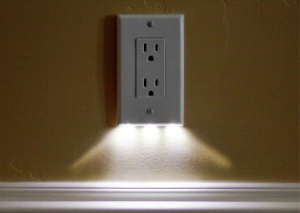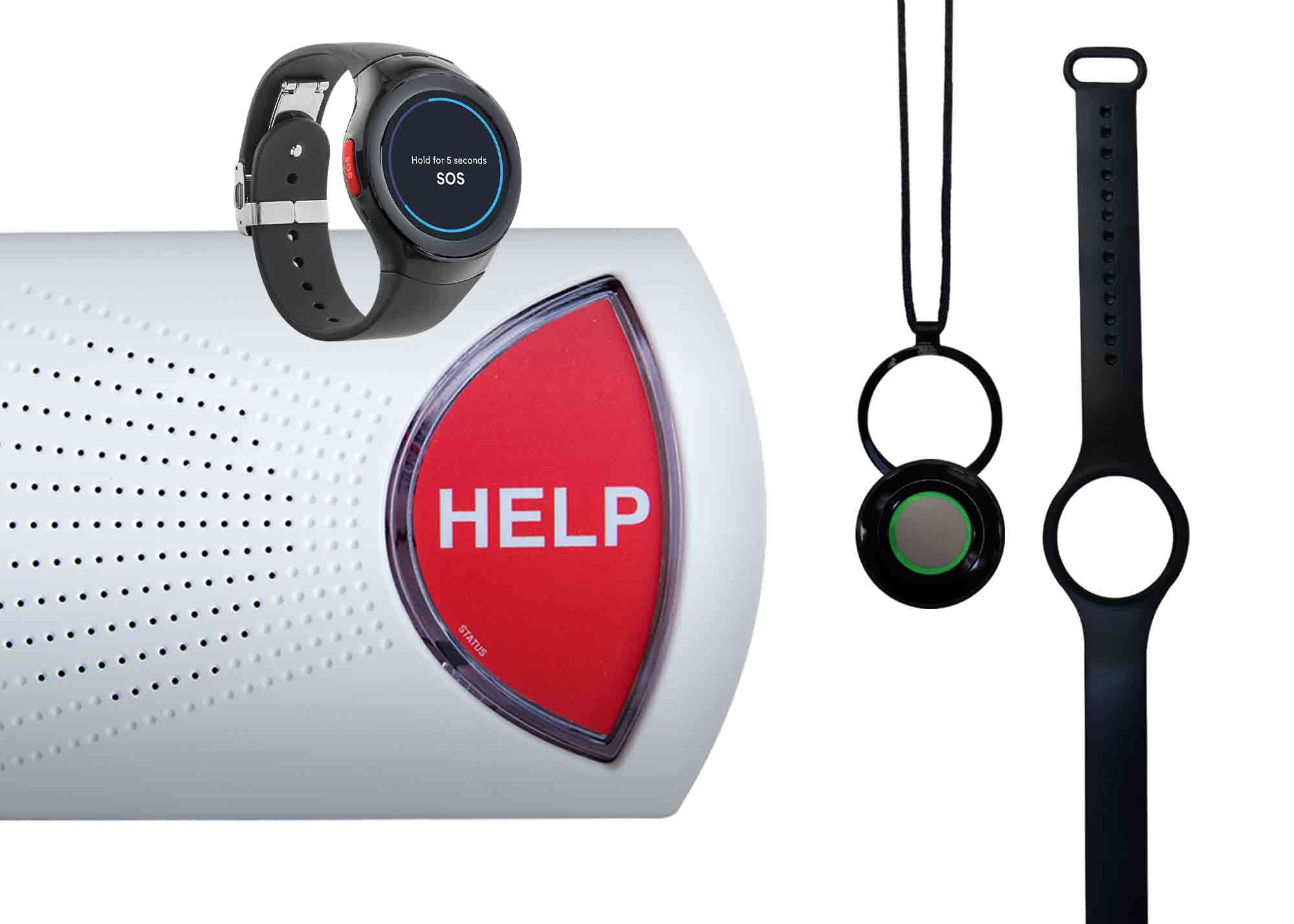Aging in Place 101: The Very Basics
June 24, 2017
One important topic that tends to come up when dealing with elderly loved ones is where is the best place for them to live while they age? Many seniors are now opting to age in place rather than moving to a care facility.
Aging In Place Expert, Rosanna Fay, is here today to share her helpful guidelines for how to do aging in place home modifications that make your loved one’s home safe and comfortable for them as they age.
—
The term “Aging in Place”, abbreviated AIP, was coined roughly 12 years ago by the National Association of Home Builders (NAHB). Essentially, AIP focuses on architectural and interior design concepts for the home and includes a range of solutions – including technology – that can help us to stay in our homes safely, independently and comfortably regardless of our age, income or ability level.
AIP relies on Universal Design techniques that help us make our houses into “homes for a lifetime”. Products and environments that are created through Universal Design are by definition usable by all people, to the greatest extent possible, without the need for adaptation or specialized design.
With this in mind, here is a very basic overview of house-wide considerations that any homeowner can use to improve their home’s AIP suitability.
Overall Considerations
Home Doors and Doorways:
Your primary door for exiting and entering:
- No more than ½ inch step, beveled.
- Install a shelf (inside or outside) for placing a purse, grocery bag, or mail while you enter and exit.
- Overhead covering for weather protection is ideal.
- Easy to use lock system and large door handle.
- A grab railing on the walking path from your vehicle to entry door.
Door width and clearance:
-
- Doors should provide a minimum of 32” clearance at knuckle height; this is measured when the door is opened 90 degrees.
- Doors need at least 18” of maneuvering space to the latch side of the door, this allows for wheelchair access as someone opens and closes the door.
- Doors that are 36” wide are optimal; they generally require re-working of jack studs and header by a licensed contractor.
- 36” wide doors are especially necessary for laundry areas where someone will be carrying a laundry basket
- Existing doorway width can be widened by as much as 1 and ¾” to 2” with the use of a swing-away door hinge.
- All door thresholds can be a tripping hazard, try to achieve no more than ½ inch for a beveled threshold at doorways.
- Check out these convenient swing away hinges that add 2″ of additional clearance for wheelchairs and walkers.
Door Handles:
-
-
- Easy to open door handles, such as lever style are best suited for AIP because levers can be pushed with elbows. For knob style handles, plastic grippers can be purchased to make for easier opening.
-
And remember, it’s important to have a fire plan. Periodically test your ability to use the plan; it may need to evolve as your physical capabilities change.
Home Controls:
-
-
- Thermostats and other controls should be easy to read, understand and accessible.
- Avoid complex, programmable controls with hard to read numbers or that are difficult to grasp; new intelligent thermostats are an ideal solution.
- Mount controls 48” above the floor.
- Mount electrical outlets no lower than 18” off floor (accessible from wheelchair), preferably 24” or higher for standing occupants.
- Use timer switches for bathroom and kitchen fans to ensure automatic shut-off, especially for low-noise fans.
- Consider adding a pilot light on the fan switch if hearing impaired so on or off position can be visibly seen.
- Breaker panel positioned with top most breaker no higher than 48” from floor.
- Ensure GFCIs per code.
- Check out the NEST intelligent thermostat & NEST protect products.
-
Home Lighting:
Ensure walkways and entry/exit areas are well lit:
-
-
- Weatherproof battery operated sensor lights can be attached to buildings and even trees to create a well-lit exterior.
- Increase light bulb wattage throughout the home to accommodate weakening eyesight.
- Use 3-way switches at “hazardous” locations such as top and bottom of stairs and each end of a hallway;
- Choose lighting fixtures with at least 2 bulbs to provide a back up in case one bulb burns out.
- Install motion sensor switches in pantries, closets, and critical household areas.
- Use motion sensitive night lights in bedrooms, bathrooms, at each entry/exit door and in most used cabinets; also consider new LED outlet covers
- Take a look at Mr. Beams battery operated motion sensor lights for hallways, task lighting and exterior as a good starting point.
- Another cool and easy to setup option is this switch plate cover with built-in LED nightlight.
-
Further Reading:
To read about Rosanna’s own experience with helping her parents age in place, check out her Aging in Place: Rights and Wrongs! article.
For more info on Rosanna and AIP tips, head over to her website next.




